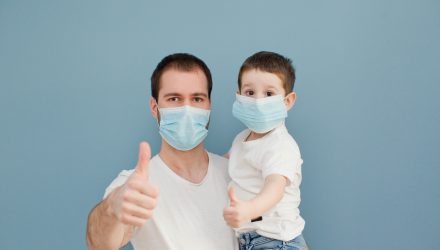While most Americans are aware of the rapidly growing threat of the coronavirus, many still continue to disregard health recommendations to wear a face mask for protection, suggesting that the act could prevent the spread of the virus to others and flatten the curve of infection rates. Now there is evidence from one of the most reposted and successful financial institutions, that ordering citizens to don a mask could potentially save the economy.
A federal face mask mandate would not only stem the daily growth rate of new confirmed cases of the novel coronavirus, according to pivotal banking institution Goldman Sachs, but it could also salvage a major loss to the U.S. economy on the order of a 5% GDP hit as well as further shelter-in-place orders and shuttering of businesses.
The stock market has been more volatile lately, as the number of coronavirus cases has begun to spike, and fear of a resurgence or second wave has taken over investors’ minds.
On Tuesday for example, stock index ETFs are tracking along with the underlying benchmarks, with the SPDR Dow Jones Industrial Average ETF (DIA) slightly negative, and the SPDR S&P 500 ETF Trust (SPY) and Invesco QQQ Trust (QQQ) trading positive, as investors weigh the impact of the potential beach and business closures during the long holiday weekend.
Jan Hatzius, Goldman’s chief economist, said his team investigated the connection between face masks and coronavirus health and economic projections and discovered that facial coverings are associated with sizable and statistically significant results.
“These calculations imply that a face mask mandate could potentially substitute for lockdowns that would otherwise subtract nearly 5% from GDP,” the economist added.
While they were not initially suggested as important for protection, the use of face masks is also something that key public health figures like Dr. Anthony Fauci have continued to champion throughout the pandemic.
Speaking on TheStreet, Fauci discussed how beneficial face masks are at blocking the spread of the coronavirus infection and why they weren’t recommended from the start. “Masks are not 100 percent protective. However, they certainly are better than not wearing a mask. Both to prevent you, if you happen to be a person who maybe feels well, but has an asymptomatic infection that you don’t even know about, to prevent you from infecting someone else,” Fauci said.
“But also, it can protect you a certain degree, not a hundred percent, in protecting you from getting infected from someone who, either is breathing, or coughing, or sneezing, or singing or whatever it is in which the droplets or the aerosols go out. So masks work,” Fauci added.
“The important thing is actually physical separation,” Fauci said, adding that the combination of social distancing and face masks is the best way for the public to mitigate the spread and reduce transmission while maintaining some normalcy by venturing in public.
Hatizus concentrated on how effective if at all, the actual use of face masks minimizes the infection rate of Covid-19 by examining population behaviors by state. He found as an example, that only roughly 40% of respondents in Arizona say they “always” wear face masks in public, compared with nearly 80% in Massachusetts. This correlates with a marked increase in the number of new cases in Arizona of late.
Goldman, which has rallied over 2% amid the study Tuesday, then analyzed the effect of mandates issued by 20 U.S. states plus the District of Columbia between April 8 and June 24 and compared it with actual face mask usage in public using YouGov Covid-19 respondent data.
The results are “large and highly significant” and reveal that state mask mandates elevate the percentage of people who say they “always” or “frequently” wear masks by about 25 percentage points in the 30 days after the government order. Thus, people are more likely to wear a mask when they are ordered to do so.
For more market trends, visit ETF Trends.








